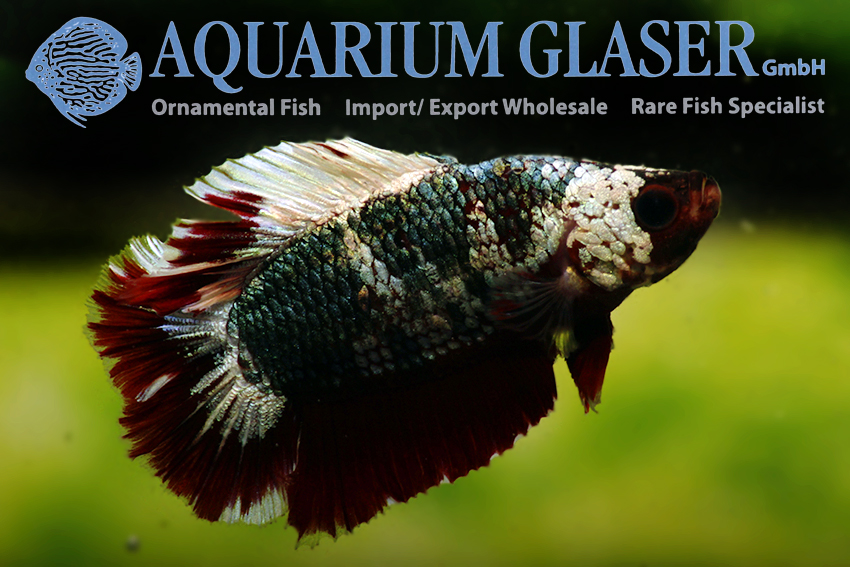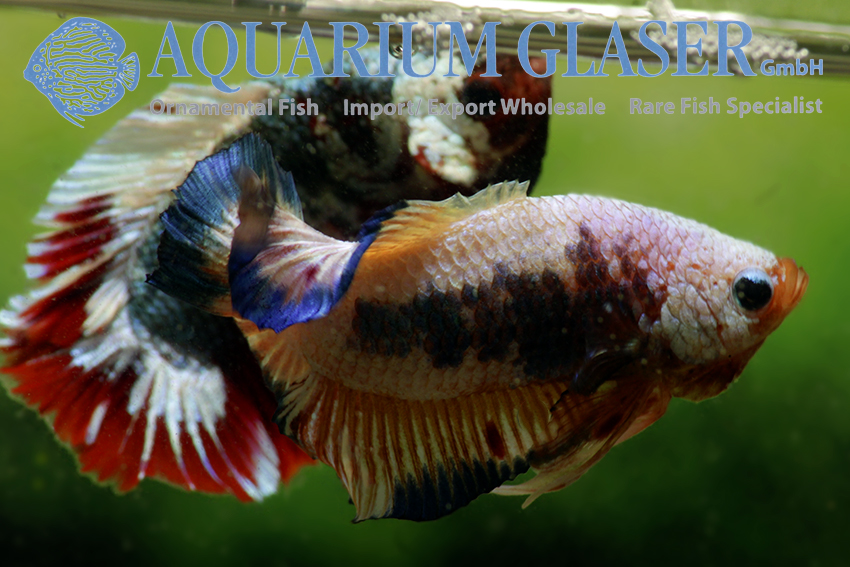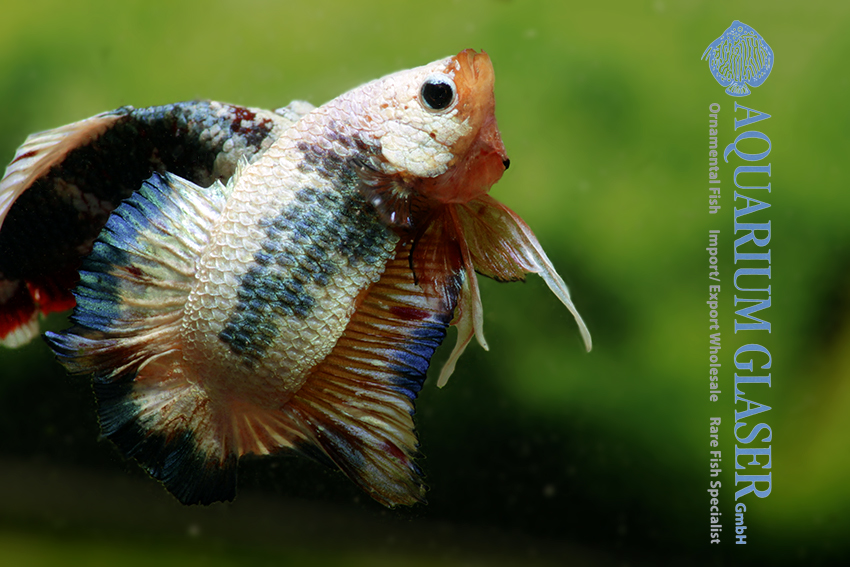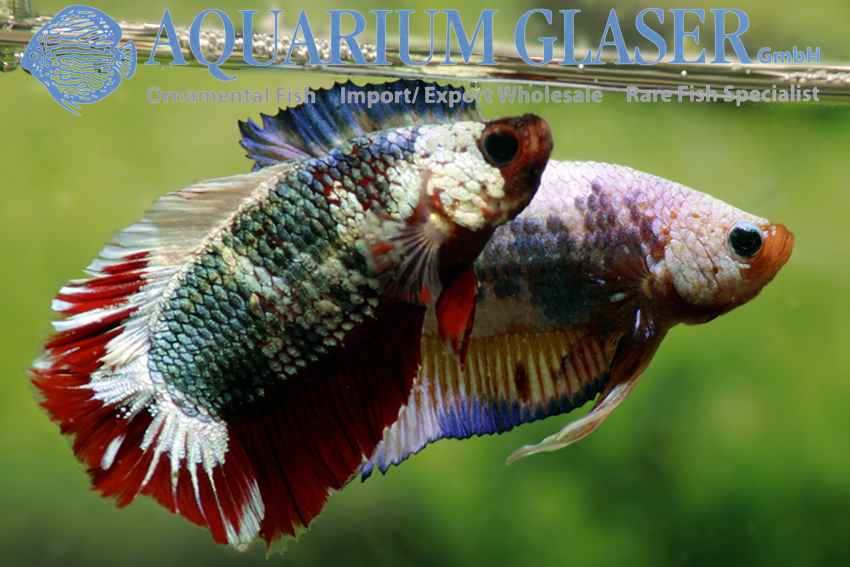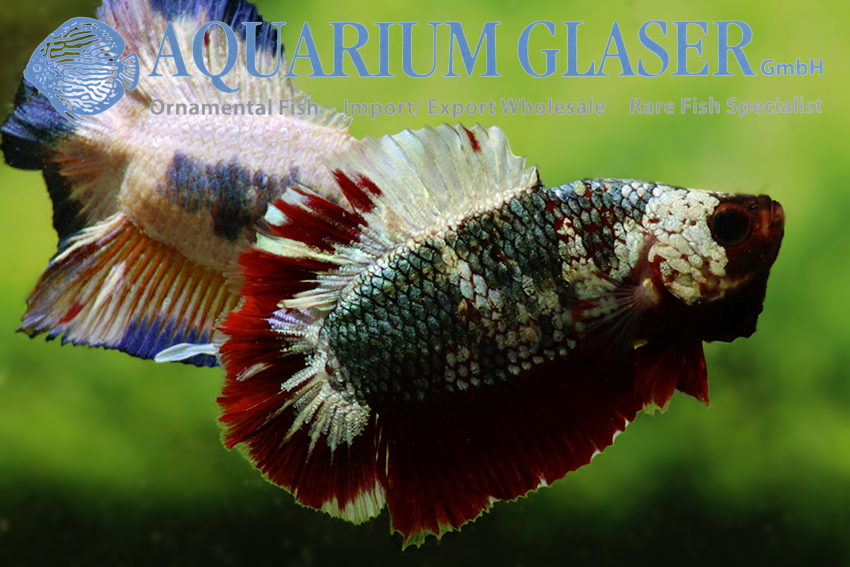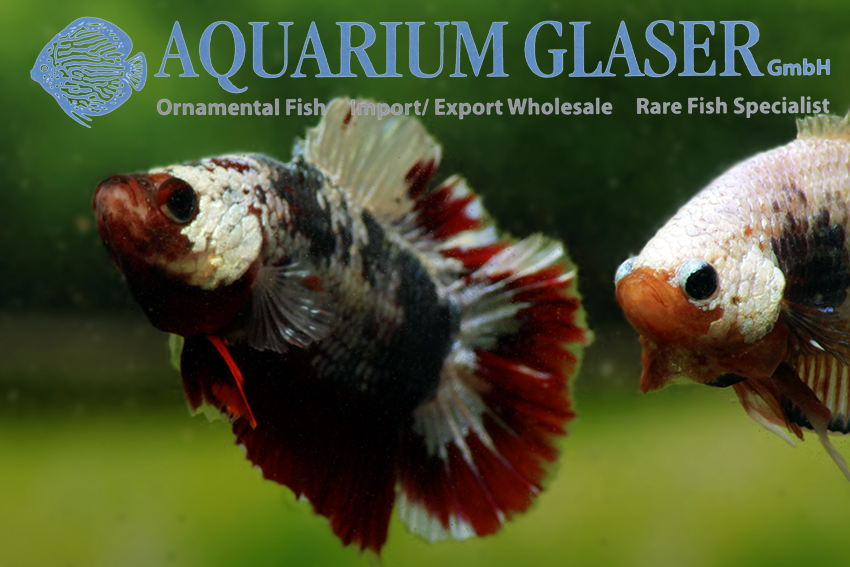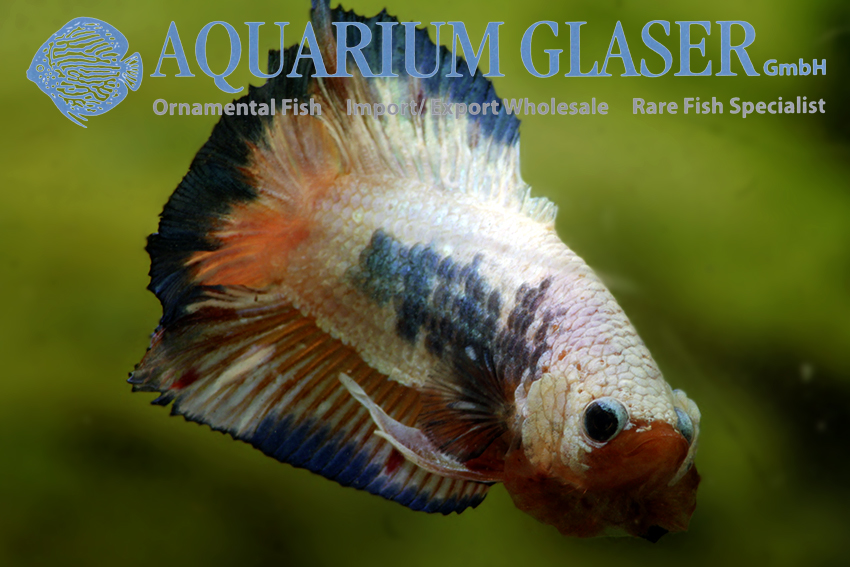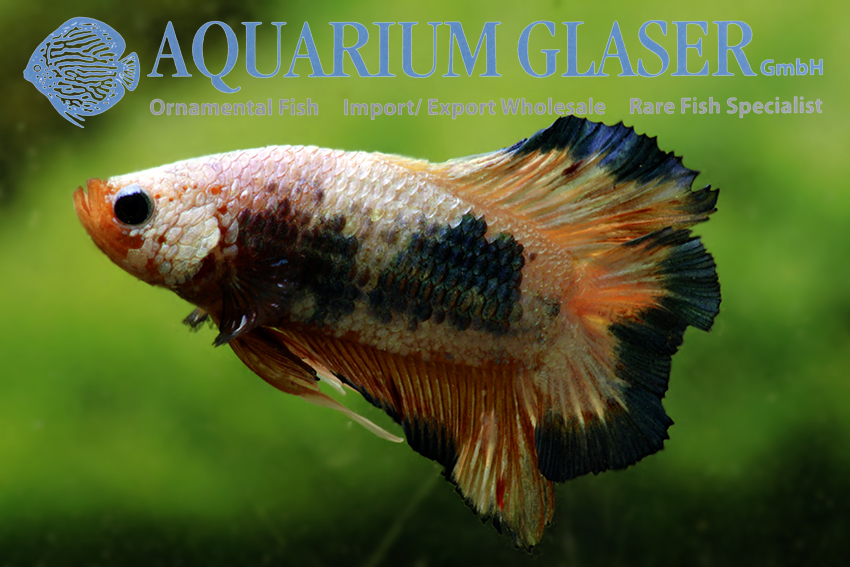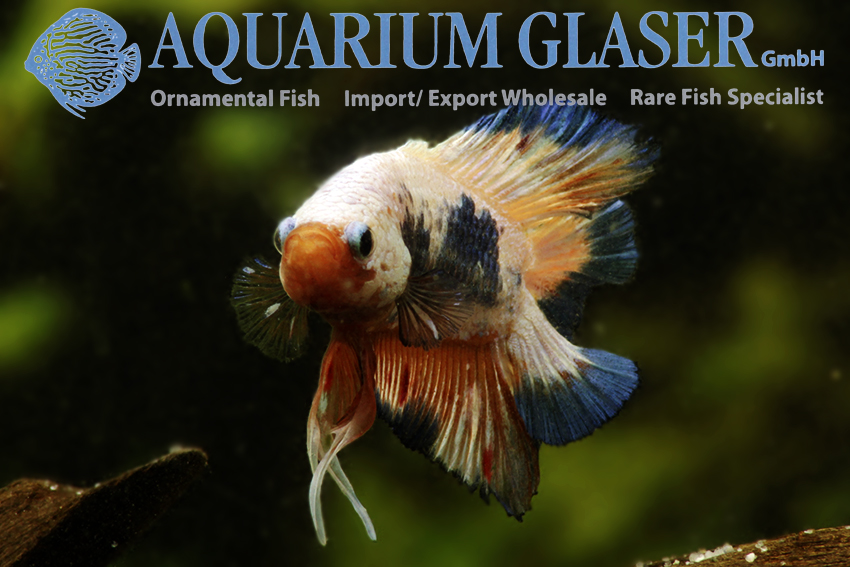Fighting fish are absolutely popular currently. The splendid colours, the easy breeding, the interesting behaviour and the unproblematic keeping are the reasons. Against other fish than conspecifics Betta splendens are usually completely peaceful; the only general exception are fancy guppys, as these are often erronously taken for male fighting fish and attacked.
Until now the development of a long dorsal fin (this is a mutation) was bound to another mutation, the splittail. In splittails the tail fin is parted in two. So far splittails are bred only on veiltail varieties. It is necessary to know that the gene for „veiltail“ is dominant against the shorttail gene. So the breeder has to have a great deal of knowledge of genetics to breed shorttailed splittails. Shorttailed fish are generally named as pla kat. The Fancy Dragon Pla Kat that appeared now for the first time in the market has the long dorsal fin of the splittail, but a different shape of the caudal fin. The latter is rather a halfmoon, most probably because splittails are not very popular in central Europe. However, there are folds in the caudal fin, maybe a heritage of the splittail ancestor.
Each individual fish of the Fancy Dragon Pla Kat looks different. But in respect of the instinctive fighting behaviour they are typical fighting fish. The fight starts with a sinking of the bottom of the mouth and spreading of the gills and opercula; after that the fish start lateral displaying with maximum spread fins. The ventral fins are used like flags in that state of the fight. Only after a good while the fish start to a fight to damage the competitor. This begins with „empty“ bites against the fins. At that stage of the fight we separate the photomodels to avoid any hurts. If we would not do so the fish would start to bite in the fins (the Thai idiom pla kat means „biting fish“) which can look really destoyed after some time. However, the fight usually does not lead to the death of one of the competitors and the fins regenerate completely. Nevertheless it cannot be recommended to keep more than one male per tank.
Text & photos: Frank Schäfer





